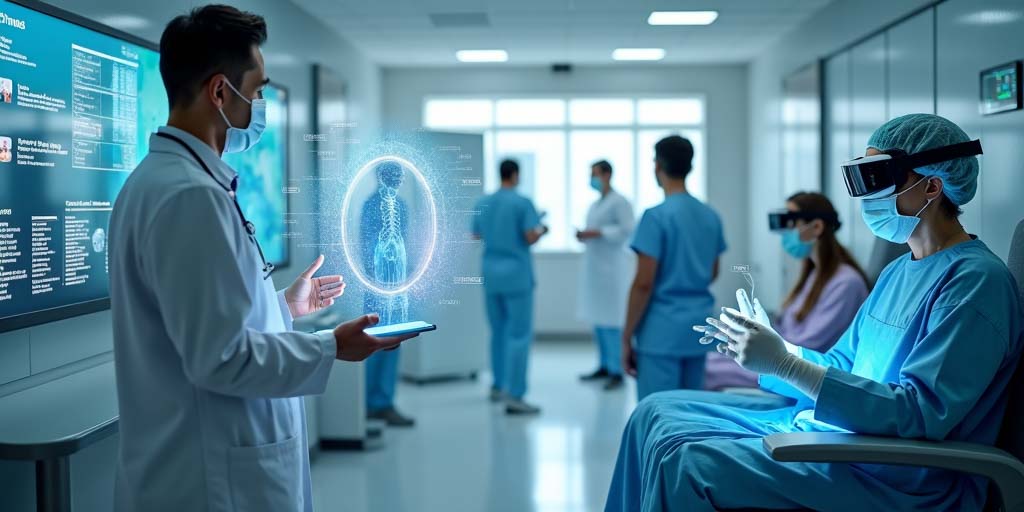Innovations in Patient Care: Top 2025 Healthcare Trends to Watch
As we approach 2025, the healthcare industry continues to evolve at an unprecedented pace, driven by technological advancements and a deeper understanding of patient needs. The integration of innovative technologies and methodologies into patient care is not only transforming the medical landscape but also promising a future where healthcare is more accessible, personalized, and efficient. In this article, we’ll explore the top healthcare trends to watch in 2025, which are set to reshape the way health services are delivered and experienced by patients worldwide.
1. Telemedicine and Remote Monitoring
The COVID-19 pandemic accelerated the adoption of telemedicine, and it continues to be a pivotal trend in healthcare. By 2025, telemedicine is expected to be a standard practice, moving beyond basic consultations to include remote monitoring and management of chronic conditions. Technologies such as wearable devices and mobile health apps will provide continuous health data to healthcare providers, enabling real-time adjustments to treatment plans and preventing hospital readmissions.
Example: Companies like Medtronic and Philips are enhancing their remote patient monitoring systems, which use advanced analytics to predict patient needs and provide personalized care recommendations directly to patients and their doctors.
2. Artificial Intelligence in Diagnostic Processes
Artificial Intelligence (AI) is revolutionizing diagnostic medicine by providing faster, more accurate assessments, which in turn lead to better patient outcomes. In 2025, AI will be more deeply integrated into diagnostic processes, from analyzing medical imaging to identifying subtle patterns in patient data that are invisible to the human eye.
Example: Google Health’s AI model can help detect breast cancer more accurately than human radiologists, reducing false positives and negatives, and ensuring timely treatment for patients.
3. Personalized Medicine and Genomics
The field of genomics is making it possible to tailor medical treatments to individual genetic profiles, a trend that will expand significantly by 2025. Personalized medicine will shift the one-size-fits-all approach to a more targeted strategy, optimizing the effectiveness of treatments for various diseases, including cancer and chronic illnesses.
Example: Companies like 23andMe and Ancestry, initially focused on genealogy, are now partnering with biotech firms to use genetic data to predict disease risk and inform personalized treatment paths.
4. Virtual Reality (VR) and Augmented Reality (AR) in Training and Treatment
VR and AR are set to transform healthcare education and patient treatment by providing immersive, interactive experiences. By 2025, these technologies will be used extensively for surgical training, patient education, and even during certain therapy sessions, such as for pain management or mental health interventions.
Example: The company VirtaMed uses VR to simulate surgical procedures, allowing doctors to practice in a risk-free environment and gain proficiency before performing on real patients.
5. Internet of Medical Things (IoMT)
The Internet of Medical Things (IoMT) refers to a connected infrastructure of medical devices, software applications, and health systems and services. By 2025, IoMT will be crucial in collecting, analyzing, and transmitting health data, enabling a more coordinated and continuous care model.
Example: Smart inhalers equipped with sensors can monitor the usage and dosage of medication for asthma patients, sending data to healthcare providers to track adherence and efficacy.
6. Advanced Robotics in Surgery
Robotic surgery is already enhancing the precision of surgical procedures, reducing recovery times, and minimizing human error. By 2025, advances in robotics will allow for more complex and less invasive surgeries to be performed with robots, further improving patient outcomes.
Example: The da Vinci Surgical System offers a magnified 3D high-definition vision system and tiny wristed instruments that bend and rotate far greater than the human hand, enhancing surgical capabilities.
7. Blockchain for Health Data Security
With the increasing digitization of health records, securing patient data is more crucial than ever. Blockchain technology offers a promising solution by providing a secure, immutable ledger for recording health transactions. By 2025, blockchain will be more widely adopted in healthcare, ensuring patient data privacy and security, and reducing fraudulent activities.
Example: BurstIQ’s blockchain platform allows the secure, compliant transfer of patient data across borders, making it easier for healthcare providers to offer global health services.
Conclusion
As we look towards 2025, these innovative trends are set to redefine patient care, making healthcare more personalized, efficient, and secure. The integration of advanced technologies into everyday health services promises not only to enhance the quality of care but also to revolutionize the patient experience. Staying informed about these trends will be crucial for healthcare professionals and patients alike, as they navigate the ever-evolving medical landscape.
By embracing these innovations, the healthcare industry can look forward to a future where medical care is more accessible, tailored, and impactful for everyone involved.
